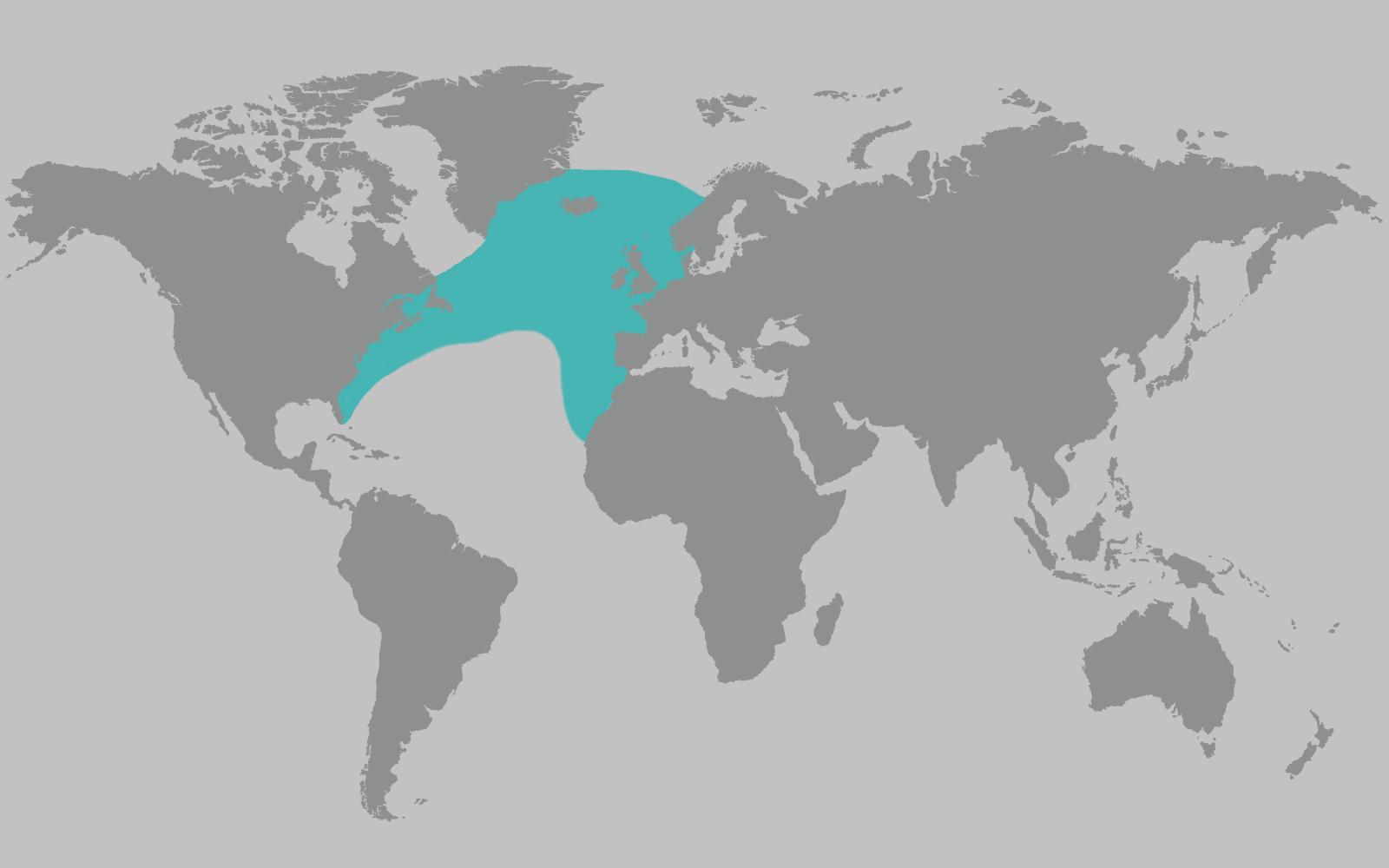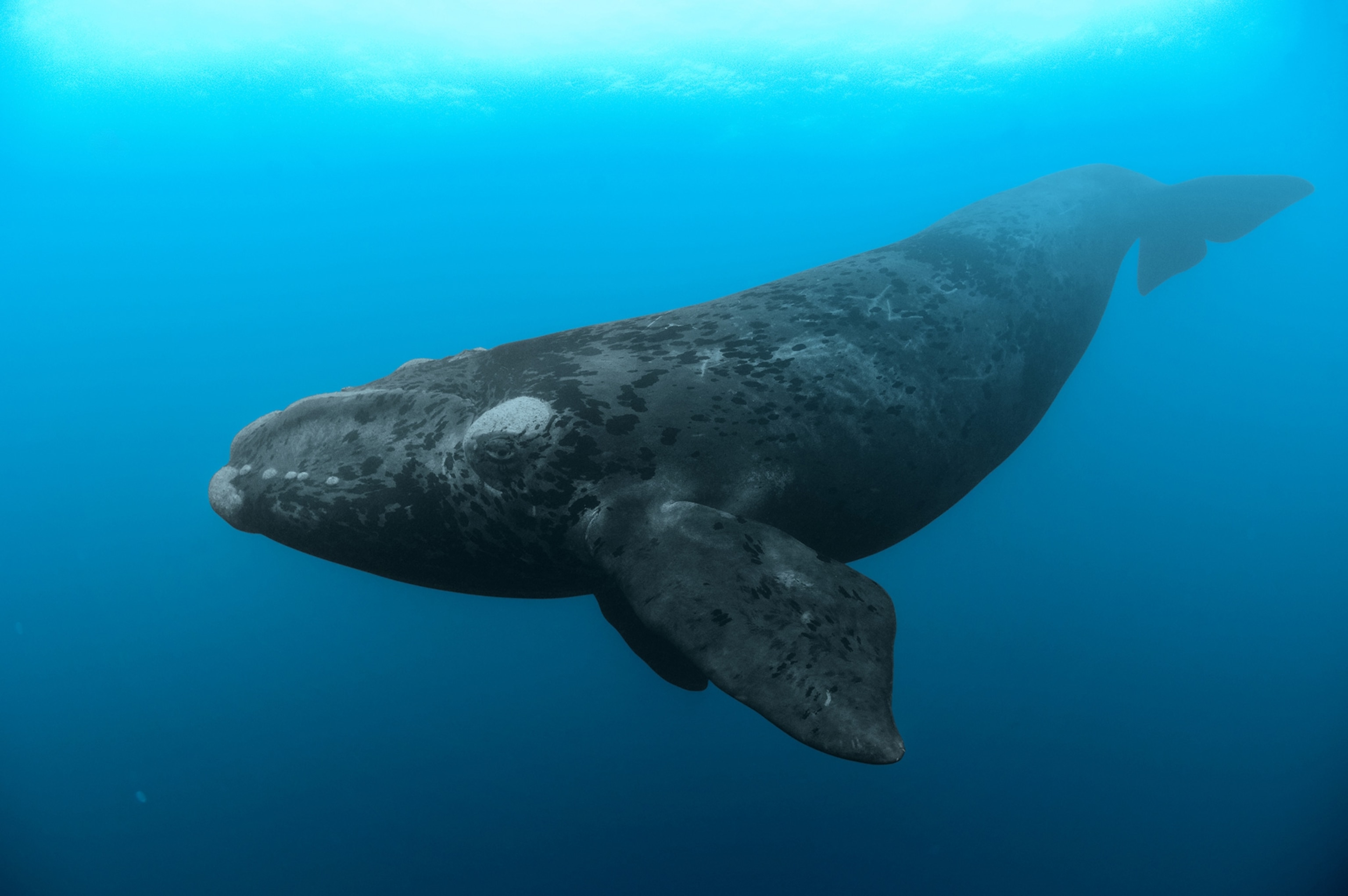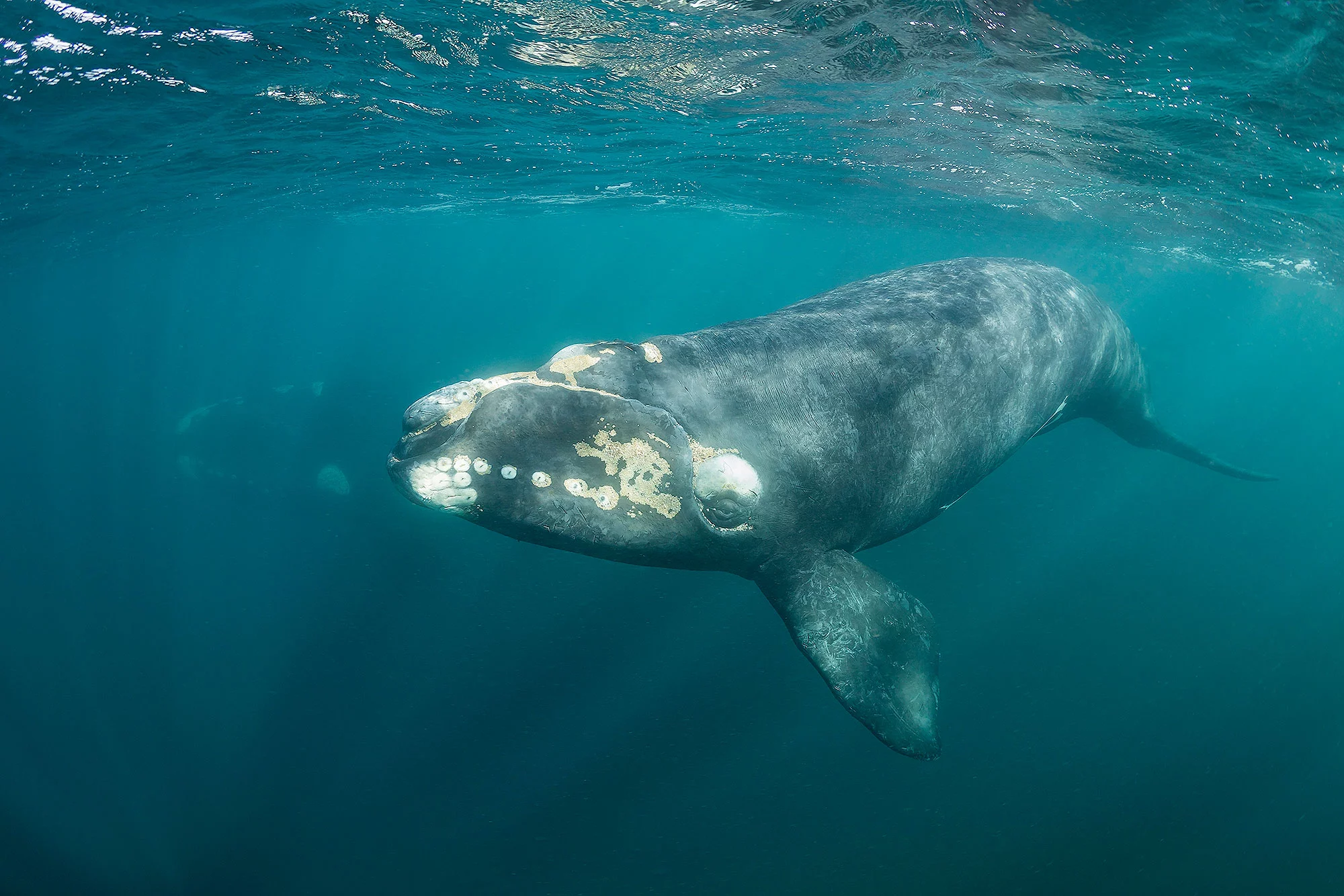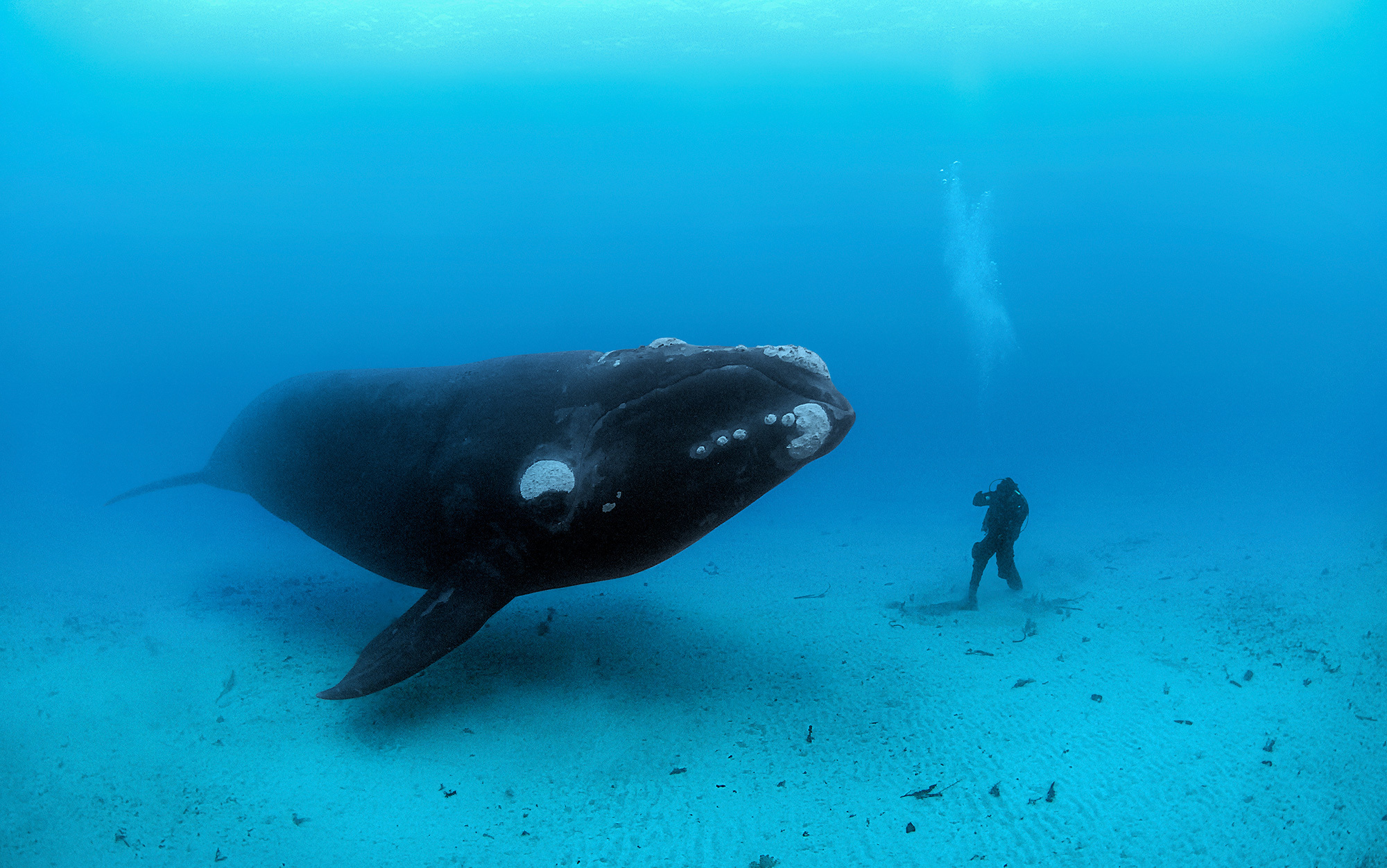STATUS
critically endangered


The North Atlantic right whale is one of the world's most endangered large whale species, with less than 400 individuals remaining. Two other species of right whales exist: the North Pacific right whale, which is found in the North Pacific Ocean, and the Southern right whale, which is found in the southern hemisphere. Right whales are baleen whales, feeding on copepods (tiny crustaceans) by straining huge volumes of ocean water through their baleen plates, which act like a sieve.
By the early 1890s, commercial whalers had hunted right whales in the Atlantic to the brink of extinction. Whaling is no longer a threat, but human interactions still present the greatest danger to this species. Entanglement in fishing gear and vessel strikes are the leading causes of North Atlantic right whale mortality. Increasing ocean noise levels from human activities are also a concern since the noise may interfere with right whale communication and increase their stress levels.
Each fall, some right whales travel more than 1,000 miles from these feeding grounds to the shallow, coastal waters of their calving grounds off of South Carolina, Georgia, and northeastern Florida, though migration patterns vary.
The North Atlantic right whale can easily be identified by the white calluses on its head, which are very noticeable against the whale's dark gray body. It has a broad back without a dorsal fin and a long arching mouth that begins above the eye. A baleen whale, it feeds by swimming through a swarm of plankton with its mouth open and the head slightly above the surface. Right whales are found more often in coastal waters, especially during the breeding season.

STATUS
critically endangered

SCIENTIFIC NAME
Eubalaena glacialis

POPULATION
Only 300-350 left

LENGTH
45 - 55 feet

WEIGHT
up to 70 tons

HABITAT
Oceans

North Atlantic Right Whales help regulate and maintain ocean food chains. In fact, whale poop helps stimulate the growth of phytoplankton which pull carbon from the atmosphere to provide a cleaner and healthier breathing environment for all animals.
North Atlantic right whales are one of the world's largest whales. Remarkably, they only eat zooplankton like copepods and krill larvae. Scientists have found they can eat between 2,200 and 5,500 pounds of food every day!
North Atlantic right whales grow up to 52 feet (15.8 m) long and weigh up to 140,000 pounds (63.5 metric tons).
The North-Atlantic right whale is one of the most endangered of all large whales, with a long history of human exploitation and no signs of recovery despite protection from whaling since the 1930s.
It is now mostly found along the Atlantic coast of North America, where it is threatened by entanglement in fishing gear and ship collisions. Some scientists believe these whales have gone extinct in the eastern North Atlantic and now survive only along the east coast of the U.S. and Canada.




